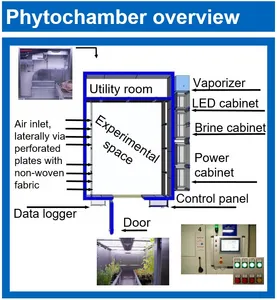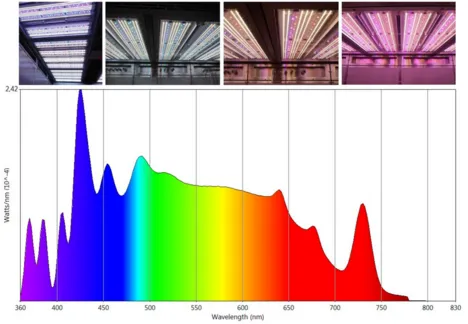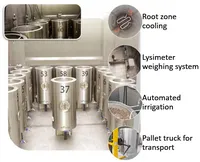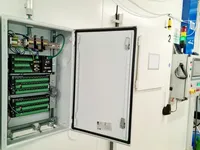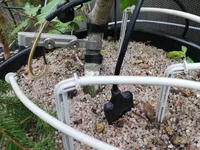Purpose and objectives
A constantly growing world population, a rapidly changing climate and highly intensified land use systems are exerting unprecedented pressure on our planet's environmental systems. In order to meet the demand for food, energy and other natural resources while maintaining essential ecosystem services, a comprehensive mechanistic understanding of our ecosystems' functioning is required.
The Model EcoSystem Analyser at the Technical University of Munich offers the unique opportunity to simulate energy, resource and information flows within natural or synthetic systems under controlled conditions and to analyze them across ecosystem spheres. Above and below ground ecosystem processes can be studied in an interdisciplinary approach with specific manipulation of a dynamic physical and biological environment.
In combination with laboratory experiments on the one hand and field studies on the other, TUMmesa enables the recording and modeling of the state, adaptability and resilience of organism communities in terrestrial ecosystems under current and future climate conditions.
A unique feature of TUMmesa is the LED lighting system based on ten independently controllable spectral bands. The uniform, low-flicker illumination allows experiments with organisms that are particularly sensitive to flickering light sources outside the range of human perception - such as many species of pollinating insects. In addition, reduced movement of air inside the chambers ensures that the flight behavior of the insects is only minimally affected.
A high degree of homogeneity and reproducibility is achieved, both within and between the individual phytotron units. The technical capabilities of the TUMmesa facility under complex climate control requirements are described and analysed in detail in the publication "Regionalized dynamic climate series for ecological climate impact research in modern controlled environment facilities" (Jákli et al. 2021).
| Technische Details | ||
|---|---|---|
| Temperature (°C) | 4 - 30 | LED illumination off |
| 10 - 30 | LED illumination on | |
| short-term up to 40 | with reduced accuracy* | |
| Humidity (%) | 30 - 90 | LED illumination off |
| 30 - 75 | LED illumination on | |
| CO2 (ppm) | ambient - 3000** | |
| O3 (ppb) | 0 - 200 | |
| PPFD (µmol m-2 s-1) | 0 - 800 | |
| LED spectrum (nm) | 340, 365-405, 430, 490, 530, 630, 660, 730 | Maxima of the respective bands |
| additionally warm white (4000 K) and cool white (6500 K) |
* an option for precise simulation of heat waves up to 40°C is currently being developed
** CO2 fumigation is already possible; a technical solution for the active removal of CO2 is currently under development
Thermally insulated lysimeters (diameter 400 mm (small) or 700 mm (large), height 700 mm) can be used as growth containers. Nine large lysimeters per chamber can be individually positioned on robust platforms equipped with precision load cells. Each of these lysimeters is provided with an irrigation system and can be individually equipped with tensiometers, soil moisture sensors and temperature sensors (sensors are not provided by TUMmesa).
